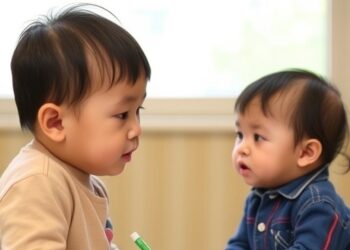It opens the mind and is at the heart of innovation, yet while creativity is recognised as a critical skill for Australia’s economic future, it is typically confined to the arts, skipping other areas of the curriculum.
Now, new research from the University of South Australia shows that creativity plays a key role in engaging students in science, technology, engineering, and maths (STEM), not only motivating them to continue their studies in STEM, but positively influencing STEM career choices beyond school.
It’s an important finding for educational design, particularly given STEM skill shortages driven by an underrepresentation of women in STEM, and the growth of artificial intelligence (AI) and automation.
Australia continues to face a STEM crisis, with school students’ results in maths and science stagnating or declining compared to international counterparts, and less than 10% of students studying higher level maths. Nationally, women make up only 37% of enrolments in university STEM courses, and only 15% of STEM-qualified jobs are held by women.
Working with an unusually sizable longitudinal dataset, researchers were able to track how students’ attitudes changed towards different subjects throughout high school, finding that their sense of being able to be creative was a significant factor influencing subject choice.
UniSA PhD student Maria Vieira, says integrating creativity across STEM subjects at school is a proactive move to encourage greater engagement, retention, and career pathways in STEM. Although this approach benefits both female and male students, it can serve as an effective tool to address the persistent gender gap in these fields.
“As the world becomes more reliant on AI and automation, the importance of STEM is undeniable. Yet there remains a distinct gap between the education system and the skills being demanded by employers,” Vieira says.
“Educating future generations in STEM is vital to help solve the problems of the future, but we need more students, and more diverse students, to study STEM throughout their school and university careers to meet future work demands.
“We also need to nurture ‘21st century skills, uniquely human skills like creativity, that cannot be replaced by AI.
“This research combines both. By incorporating creativity into STEM subjects, we’re ensuring students can feel creative, which motivates and encourages them to continue with STEM and hopefully take up STEM career pathways.”
However, with NSW ushering in a new school curriculum that focuses on direct instruction – learning essential knowledge with detailed and specific content – there is a risk that student motivation will drop, says co-researcher, Professor Simon Leonard.
“As AI takes over the mundane, we need education to become good at working with complex capabilities like creativity,” Prof Leonard says.
“Of course, direct instruction is necessary to build important skills, like numeracy and literacy, but it is not sufficient to prepare children to thrive in the world of tomorrow, and to make it a world worth thriving in.
“Humans like to be and to feel creative. It motivates us to succeed. We need policy makers, school leaders and researchers to really open up to the idea that creativity is at the heart of motivating students, and it can make the difference in graduates choosing to study in a STEM field.”
Notes to editors
This research was conducted by a team of UniSA researchers including: PhD student Maria Vieira, Dr John Kennedy, Prof Simon Leonard, and Prof David Cropley.
…………………………………………………………………………………………………………………………
Media contacts: Annabel Mansfield M: +61 478 182 489 E: Annabel.Mansfield@unisa.edu.au
Maddie Rawlings E: maddie.rawlings@unisa.edu.au
Contacts for interview: Maria Vieira E: Maria.Vieira@unisa.edu.au
Prof Simon Leonard E: Simon.Leonard@unisa.edu.au




